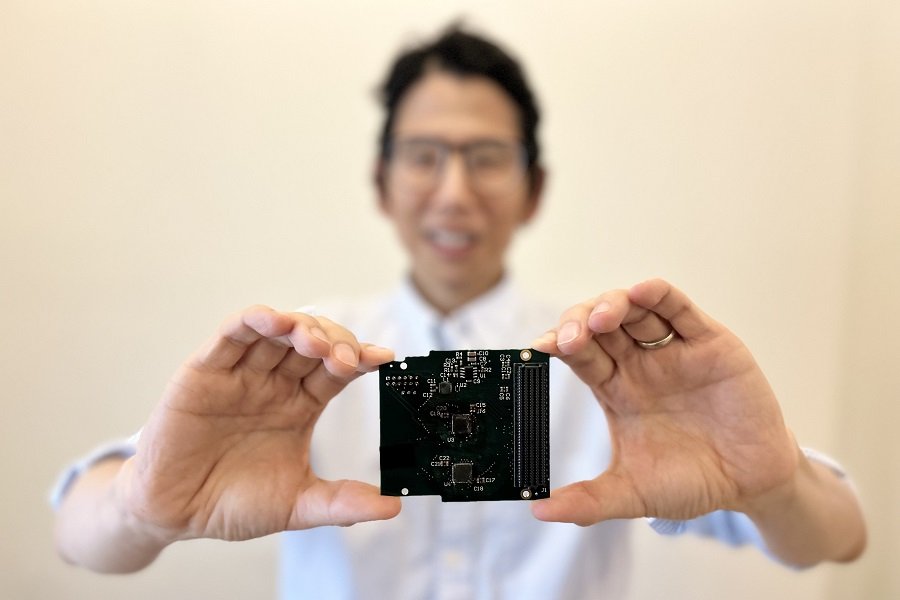IEEE Spectrum highlights Ising solver chip designed by Professor Chris Kim’s research team

The chip emulates quantum properties, has been developed using existing manufacturing technology and design software, and is on the path to resolving large scale optimization problems.
Researchers led by Distinguished McKnight University Professor Chris Kim recently fabricated an Ising solver chip that features all-to-all architecture using conventional semiconductor technology. The use of all-to-all architecture overcomes the challenges typically encountered when using traditional architectures and offers advantages such as faster computation with fewer additional pre/post-processing overheads. These are particularly expedient for resolving complex optimization problems, most common and relatable examples of which are scheduling (for instance, airline schedules) and logistics (delivery of goods and services).
The details of the chip design and test results were published in Nature Electronics in a paper titled, “An Ising solver chip based on coupled ring oscillators with a 48-node all-to-all connected array architecture.” Kim and his team of scientists designed this particular Ising solver chip keeping in mind that problems in the real world are most efficiently and effectively solved by all round connectivity, where messages in the form of signals can be sent to and received by multiple entities/nodes simultaneously.
The team adopted a particularly unique approach: use quantum computing as a launching point while situating the chip design within existing silicon-based semiconductor technology. The design enables faster computation, so you can arrive at a solution rapidly while also consuming less energy. Besides, the use of existing silicon technology provides the added advantage of better scalability.
In “Connection Machine Joins All to All to Optimize Better,” IEEE Spectrum highlights the efforts of Kim and his research team to bring us closer to solving optimization problems more efficiently. This includes the development of a quality control process to ensure that solution is indeed the best one possible of all the possible answers. A key obstacle, as pointed out by Kim in the Spectrum article, to the deployment of the Ising chip to solve critical industrial problems is the need for much larger all-to-all connections beyond the 48 all-to-all connections. However, one area where this can be impactful is in the transmission of data via antenna systems for 5G and future 6G wireless networks. Current systems have to deal with the significant challenge of interference when multiple antennas are sending and receiving signals simultaneously. Kim and his team are collaborating with researchers at Princeton University to come up with a solution that is based on the Ising model.
Intel Corporation provided supplementary funding support and technical mentoring for this project.
Read the full Nature Electronics paper titled “An Ising solver chip based on coupled ring oscillators with a 48-node all-to-all connected array architecture” without a subscription.
Read the IEEE Spectrum article titled, “Connection Machine Joins All to All to Optimize Better.”
This is the first paper to emerge from research supported by the $6.8 million DARPA Quantum-Inspired Classical Computing (QuICC) program grant that Kim was awarded earlier this year.